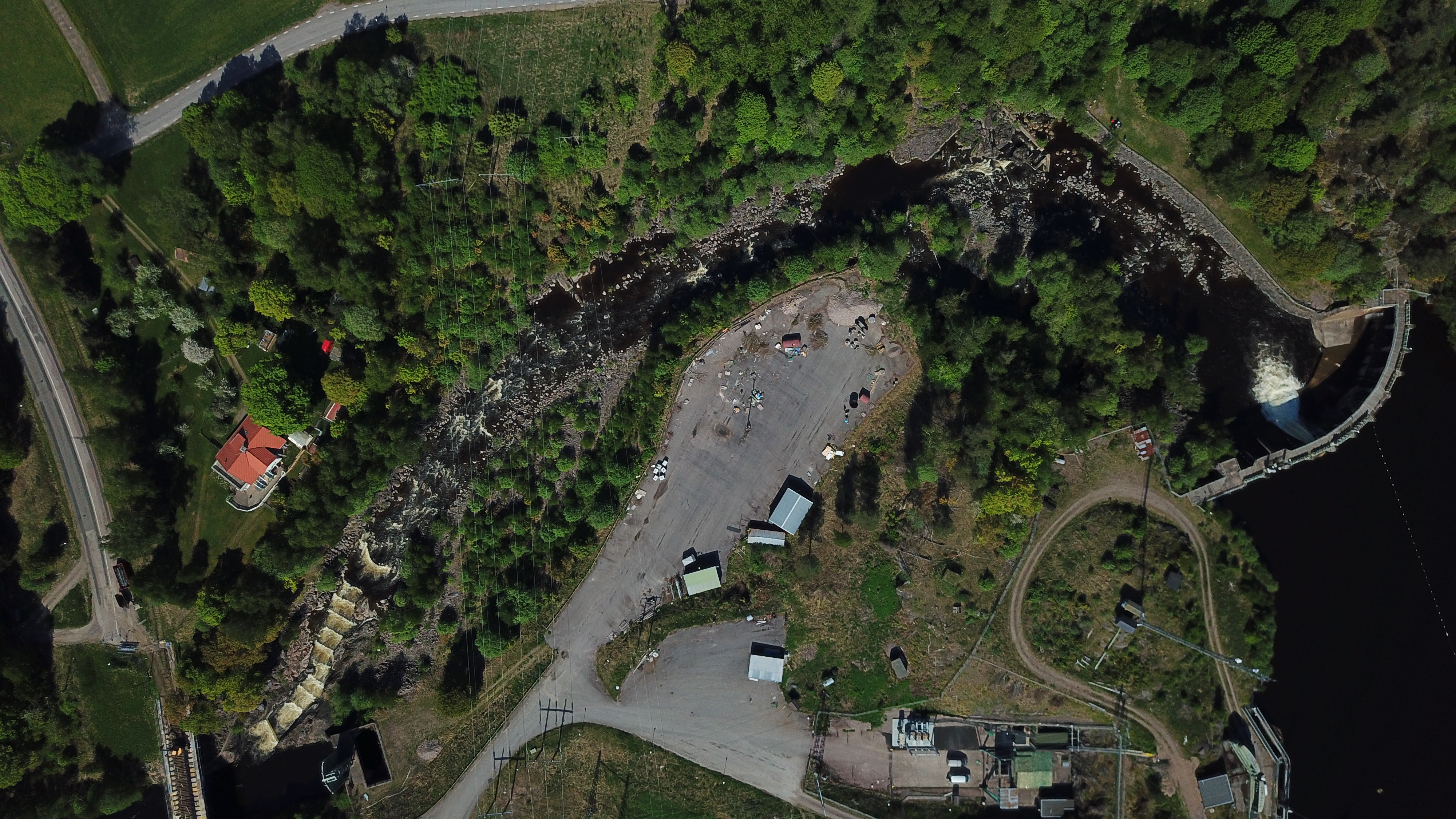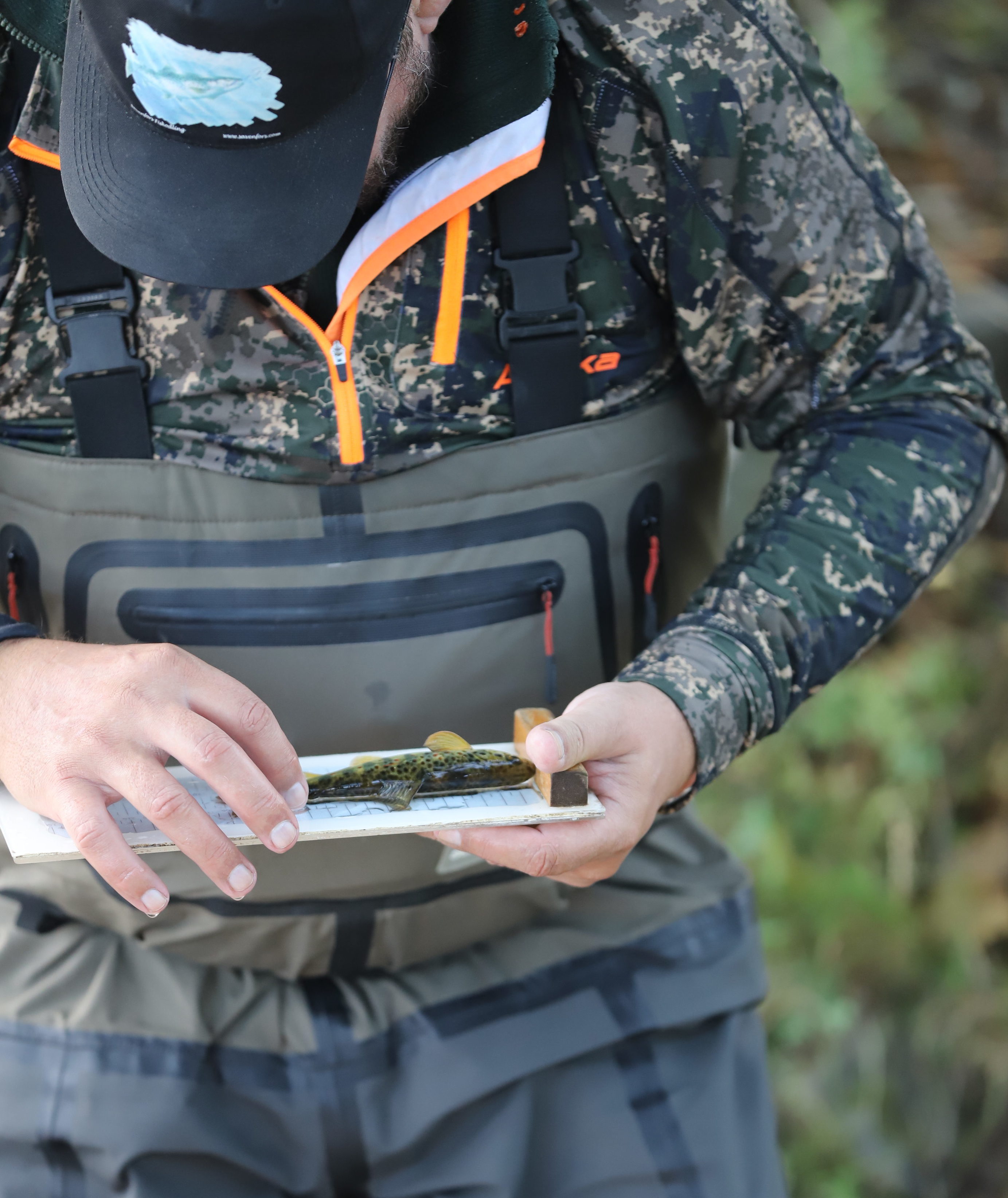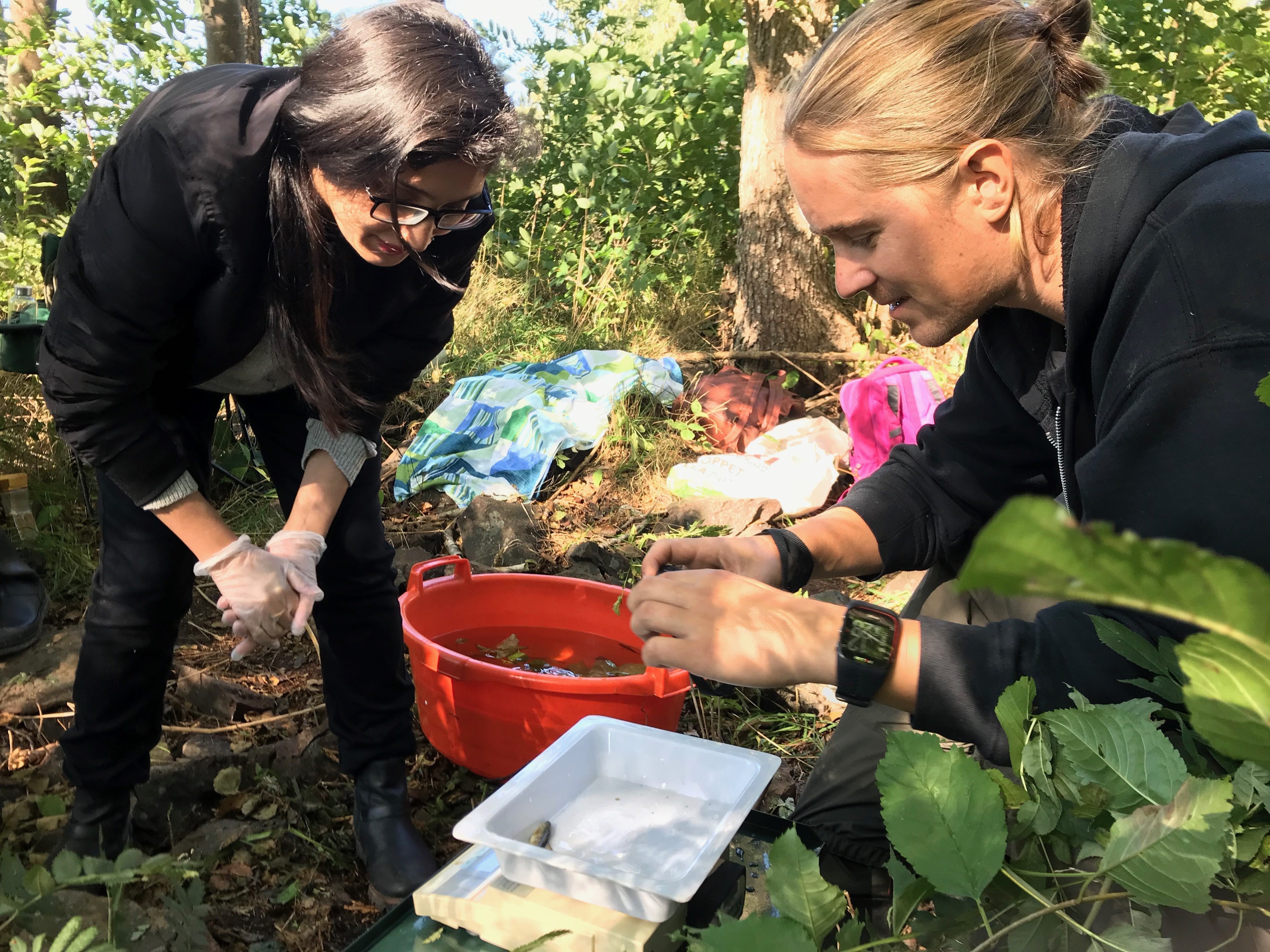Advanced ecological modelling for prioritizing environmental flows and habitat restoration in regulated rivers
Project details:

Study site: Gullspångsforsen

Fredrik (Länsstyrelsen Västra Götaland) and Kristine (Kau) electrofishing at Lille Åråsforsen. Photo by Åsa Bongnell-Höjer

Kristine Lund Björnås and Niclas Carlsson taking point measurements of the physical habitat in Gullspångsforsen

Identifying and measuring length of fish. Photo by Åsa Bongnell-Höjer
We aim to co-produce state-of-the-art eco-hydraulic models with Sweden’s three largest hydropower industry partners to assess fish production and ecosystem services in important case studies in regulatedrivers. In the project, we will:
- Develop state-of-the-art individual-based models (IBMs) to accurately assess net energy intake (NEI) and habitat quality for Atlantic salmon, brown trout, and grayling
- Link advanced hydraulic and NEI models for reach-scale IBM predictions of fish production in rivers under various flow, habitat, and climate scenarios
- Apply IBM results to innovative life cycle models (LCMs) to forecast fish population responses over time under various management scenarios
- Analyze ecosystem services delivered under various scenarios and assess stakeholder preferences to guide future decision-making
Our research has the potential to contribute to prioritization of flow and river restoration, while minimizing the negative impacts of e-flows on hydropower production and stakeholder benefits.
Case Gullspångsälven: Mapping salmonid habitat in the Gullspång River
During a hot and sunny week at the end of June 2018, a bunch of enthusiastic people (ages spanning twenties to eighties!) donned waders and ventured into the Gullspång River to collect data. This time it wasn’t the salmon and trout themselves we were out to study, but rather the physical environment the fish experience in the river.
With the use of high-precision GPS’s, forms on mobile phones, echo sounding from a small kayak, as well as an overflying drone, we were able to collect XYZ- referenced data on the surface, bottom and sides of the river in the three relevant stretches – the Gullspång rapids and the two Årås rapids. We also did point samples of dominant substrate size, vegetation, water velocity and depth using underwaterscopes and hand-held current meters. It wasn’t always easy to walk around in the fast-flowing water with all that equipment!
We are grateful for the good cooperation with Fortum, representatives from Mariestad, Töreboda and Gullspång Municipalities, the County Administrative Board in Västra Götaland, the Gullspång River Action Plan, Sweco, Jyväskylä University and representatives from the Gullspång salmon management group! Thanks to being around 20 dedicated people in total, we managed to get high-resolution data over a quite large area within the five days that were set aside.
The data are being used to make hydraulic models as well as layers of habitat properties for the inSTREAM salmon and trout population model.
Collaborators/ Project Members:
John Piccolo, Martin Österling, Olle Calles, Johan Watz, Khadija Aziz, Kristine Lund Björnås, Karlstad University, Sweden
Johan Kling and Ola Nordblom, DHI Sweden AB
David Aldvén and colleagues, Vattenfall AB
Marco Blixt and colleagues Fortum AB
Johan Tielman and colleagues, Sydkraft Hydropower AB
This project is co-funded by the Knowledge Foundation (KK-stiftelsen) and Karlstad University.
Keywords: Ecological modelling, E-flows, River management and restoration; salmon, trout
Contact
John Piccolo
Associate Professor in Biology
john.piccolo@kau.se

Taking DNA samples of fish. Photo by Åsa Bongnell-Höjer

A brown trout (Salmo trutta). Photo by Åsa Bongnell-Höjer

Taking length and weight measurements of fish species

Taking length and weight measurements of fish species
Both comments and pings are currently closed.

